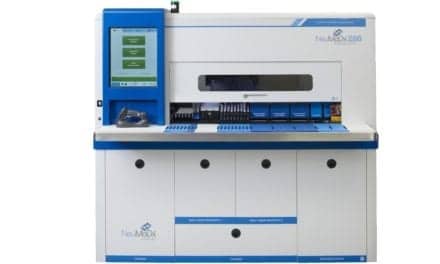Dried blood spot testing, a 56-year old testing technique, is experiencing a resurgence. Clinicians and test subjects like it because it’s less invasive and requires only a small amount of blood. Samples are safely stored on a transportable, unbreakable piece of blotter paper instead of in a breakable glass vial. Upon extraction, today’s sophisticated analytical techniques allow testing of numerous metabolites and other genetic materials.
CFP-DBS-v1, a high-purity cotton-based cellulose filter paper from IW Tremont, Hawthorne, NJ, provides an optimal matrix for the collection storage, and transport of protein biomarkers for quantitative analysis in diagnostic applications. The material has been optimized for the emerging direct elution technique, whereby the sample is eluted without the traditionally performed punch process. This key attribute makes CFP-DBS-v1 especially suited for the next generation of highly automated sample handling processes.
“We designed the material for compatibility with the Guthrie test, the original screening test for newborns, yet it is also optimized for direct elution, which serves the needs of future applications,” says James A. Averso, vice president for sales and marketing at IW Tremont. The uniform purity and density of CFP-DBS-v1 material delivers highly reproducible results in assays designed for testing the presence of phenylalanine, phenylpyruvate, and phenyllactate in blood or urine. “This material is both interchangeably equivalent to competitive products in more mature test procedures, while it is optimized for future technologies,” Averso adds.
CFP-DBS-v1 dried blood spot cellulose paper consists of high-purity alpha cotton linter formed into a blotter paper designed to yield uniform surfaces for consistent absorption. The manufacturing process is closely monitored to ensure lot-to-lot reproducibility, with all material chemistries verified against a quality standard using high-pressure liquid chromatography and gas chromatography. For traditional punch-to-elute techniques, the fiber finish yields cleanly punched edges with minimal extraneous fibers. In direct elution techniques, the material’s slightly thinner caliper and lower density yields lower backpressure with reliable recoveries.
At the time of publication, no FDA 510(k) has been filed or cleared. Suitability for clinical use without such clearance is not implied. Validation of the material for incorporation in approved devices is the responsibility of the test manufacturer.
For more information visit IW Tremont.






